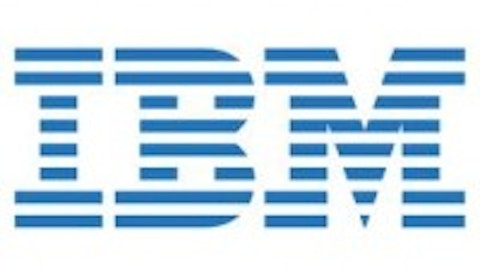
But is Apple, considered the most valuable tech company in the world despite losing 40 percent of its stock value in the last seven months, actually in a position to learn something from Microsoft, which was the big man on the tech campus more than a decade ago?
The longevity argument
Greg Satell put forth some ideas and arguments as to why he prefers Microsoft Corporation (NASDAQ:MSFT) to Apple Inc. (NASDAQ:AAPL) in a question asking what is the most successful technology company. When push comes to shove, Satell said his money is going on Microsoft for its longevity and stability.
But what about Apple’s longevity?
My main disagreement with Satell is simply that Apple’s business model has been different from Microsoft’s for 30 years and it has done just fine, thank you very much. Apple is no new kid on the block – perhaps Satell should look at this from a purely objective view.
My main point is, if there is any advice for Apple Inc. (NASDAQ:AAPL) at this point, Satell missed it. He went on about a need for Apple to diversity itself away from relying so heavily on iOS, develop and build alliances with other companies (not tear them down like it’s doing with Samsung), and spend less time and energy on legal battles over patents.
Critiques
So what should have Satell addressed in his piece?
For me, the one thing that has remained constant for Microsoft but that Apple has seemed to abandon in recent years has been product innovation.
In the early years, both companies had the same business model they have now – Microsoft produced the software but outsourced its hardware by working with partners. Apple Inc. (NASDAQ:AAPL), meanwhile, has been working with its insulated ecosystem where it produces virtually all or most of its software, hardware and components for its various devices.
Microsoft Corporation (NASDAQ:MSFT) has been steadily investing serious money in research and development, and thus it would put out a new innovation (like an upgraded Windows OS, for example) every few years. Even after three decades, it still won’t put out anything unless it meets its high quality standards. Plus, it is very patient with its rollouts. It doesn’t measure success in the next couple of quarters; it measures success over a couple of years. Take Vista, for example. That OS was panned from the get-go, but Microsoft Corporation (NASDAQ:MSFT) patiently sold it and gave it a full couple of years in the market before ditching it in place of Windows 7.
Apple has not been so patient.
A return to innovation?
While Redmond gives its new innovations a fair shot to produce sales numbers, Apple has recently been on a dizzying production cycle where it tries to roll out a new device every few months, and a new OS nearly every year. In this writer’s humble opinion, focusing on quantity of products in the market or the speed in which they are produced takes away from the focus on innovation. Yes, Apple Inc. (NASDAQ:AAPL) was the leader in tech innovation, but that was when Apple looked to make devices that were truly new and different from their predecessors, not just updates from the fall because now it’s spring.
If Apple wants to return to its innovative ways, it likely could take from the Microsoft model in this way – slow down. Once a device is introduced, don’t put out a new version until it is truly a new version. Let the level of innovation dictate the production schedule. Apple has succeeded for 30 years because it has been different from Microsoft Corporation (NASDAQ:MSFT) in the ways Satell wrote – but it was successful like Microsoft due to the similarity in focus on innovation. When Apple diverged from that, it lost its edge.
An investor’s comparison
From a valuation standpoint, both Microsoft and Apple are cheap, especially when compared to close competitor Google Inc (NASDAQ:GOOG). Google Inc (NASDAQ:GOOG) trades at a forward P/E in the mid 14-range, with a PEG of 1.6. Apple, on the other hand is nearly half as expensive, sporting a PEG of 0.5, despite the fact that Wall Street’s growth estimates are more optimistic.
Top-tier analysts expect Apple Inc. (NASDAQ:AAPL) to generate annual EPS growth of 18.9% over the next five years; Google’s estimate is near 15%, while most expect Microsoft to come in around 9% a year. This differential is very important, because it’s clear that investors expect Apple to generate growth in the range between Google Inc (NASDAQ:GOOG) and Microsoft Corporation (NASDAQ:MSFT), which trades at a PEG of 1.7—rather than what the Street expects.
A divergence no one talks about
Now, this is a divergence in opinions between mainstream investors and Wall Street analysts; but it’s the fundamental basis for Apple’s seemingly low valuation, and is a story that’s not discussed often enough. Only time will tell which side will win, but if the aggregate market is correct in surmising that Apple will grow less than most expect then its valuation metrics aren’t really that cheap after all.
With recent reports that a key Apple Inc. (NASDAQ:AAPL) supplier is becoming more bearish, along with forecasts of a monumental drop in iPad Mini sales this coming quarter, it’s crucial for value investors to at least understand that their underlying growth estimates may be too optimistic.
Questions, comments
What are your thoughts about Apple as it compares to Microsoft Corporation (NASDAQ:MSFT), and where do you see it going from here? Do you think Apple should heed any of this advice and be willing to adapt? Let us know your thoughts in the comments section below.
The article What Apple Can Learn From Microsoft originally appeared on Fool.com and is written by Jake Mann.
Copyright © 1995 – 2013 The Motley Fool, LLC. All rights reserved. The Motley Fool has a disclosure policy.

